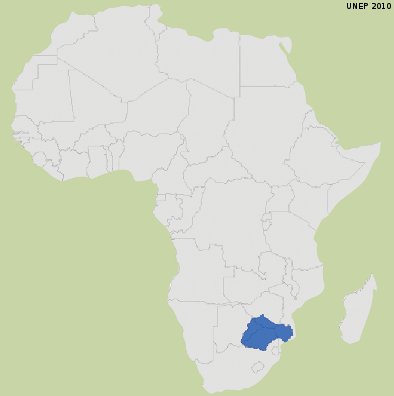A large share of the basin lies in South Africa (45%) while the rest is divided roughly equally between Botswana (19%), Mozambique (21%), and Zimbabwe (15%). The basin has a population of approximately 14 million, evenly divided between rural (52%) and urban (48%) areas.
Climate in the Limpopo Basin
The climate in the Limpopo Basin ranges from tropical rainy along the coastal plain of Mozambique to tropical dry savannah and tropical dry desert further inland south of Zimbabwe. Annual rainfall varies between 250 mm in the hot, dry western and central areas to 1,050 mm in the high-rainfall eastern escarpment areas.
The rainfall is highly seasonal and unevenly distributed spatially, with about 95% occurring between October and April and typically concentrated in a number of isolated rain days and in isolated locations.The rainfall characteristics limit crop production because annual rainfall mainly occurs during a short summer rain season with high inter-annual variations.
Flooding and droughts are major water-mediated impacts of climate change in the basin. Floods are a known common factor occurring in Mozambique while the rest of the countries in the basin are prone to frequent drought.
Due to its location in an area of transition between major climatic zones, the climate of southern Africa and Limpopo basin in particular is variable which is somehow affected by a series of different air-masses.
Water scarcity in Limpopo Basin
The Limpopo River Basin is affected by both physical and economic water scarcity. According to a UNEP assessment of water scarcity, conducted in 2009, the majority of the Limpopo basin is considered to be in a state of physical water scarcity. While is some parts of the basin water scarcity is primarily an economic factor, stemming from inadequate financial and human capital to the governance structures necessary to support sustainable water resources development.
Climate change and its impact
As a matter of fact, climate change has important implications for water and agricultural systems. Altered precipitation patterns and higher temperatures affect water availability and agricultural water requirements. Changes of water availability affect water supply to various water-use sectors, including irrigation, suggesting uncertain and possibly reduced agricultural harvests.
Although climate change is global, its water and agricultural impacts are local; they are expected to be most pronounced in arid and semiarid areas, such as the Limpopo Basin. It is therefore, important for governments to acknowledge the potential threat climate changes poses and raise awareness of the issue through mainstreaming and education.
WACDEP implementation
WACDEP should support governments and communities in the basin to take measures that are focused in the areas of flood mitigation and risk management as well as aligning crop production systems that can cope with water scarcity. More important, societal and political will must support the intent to act from national to local government level. Finally a range of adaptive actions must be taken, including a range of options that address demand, supply, culture and expectations.
